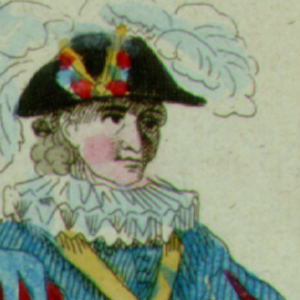Social Structure

We Must Hope That It Will Soon Be Over
A common complaint of pre-revolutionary rural petitions was the abuse of seigneurial dues owed by French peasants to lords supposedly in exchange for protection and supervision.

Oath of the New Horaces
Social discrimination against old regime elites continued in this parody of a famous painting prior to the French Revolution, The Oath of the Horatii, by Jacques–Louis David which focused on the courage of three brothers who thrust their arms bravely forward to signal their willingness t

Through Me You Are All Brothers
Reflecting the sentiments of the French Revolution, this image shows the three orders unified by religion. The Virgin standing at right in a cloud holds a cross from which rays emanate to three figures representing the clergy, nobility, and Third Estate.

General Federation of the French
This image provides a visual overview of the Festival of Federation of 14 July 1790.
Source Collection: Social Causes of the French Revolution
Instead of bringing unity and a quick, political resolution to the questions of 1789, as intended by its originators, the Revolution was producing further conflicts. What had happened? Had the revolutionaries expected too much?

The Joyous Accord
This allegorical image represents the sentiments of social unity that the National Assembly sought to promote through the Festival of the Federation of 14 July 1790 during the French Revolution.
Tension between Rich and Poor
The Marquis de Mirabeau, a well–educated nobleman, worried about the migration of French nobles to the cities and the passing of lands into the hands of "new men," wealthy commoners without a sense of paternal obligation toward the peasants on that land.
Beaumarchais’s Understandings of Inequality
Like his predecessors of earlier generations, playwright Pierre–Augustin Caron de Beaumarchais—who became an important figure of the late Enlightenment because of the controversy surrounding his work The Marriage of Figaro [1784]—believed that a truly rational society would not tolerate
Montesquieu’s Attack on the Nobility
In his Persian Letters, published anonymously and abroad in 1721, Charles–Louis de Sécondat, Baron de Montesquieu, president of the Parlement of Bordeaux and a noble himself, made a scathing critique of nobility that set the tone for the philosophes’ attack on the inequality of eighteent
Voltaire’s Understanding of Inequality
This passage from François–Marie Arouet, pen–named Voltaire, who was perhaps the best–known writer of the eighteenth century, illustrates the spirit of investigation of the Enlightenment.